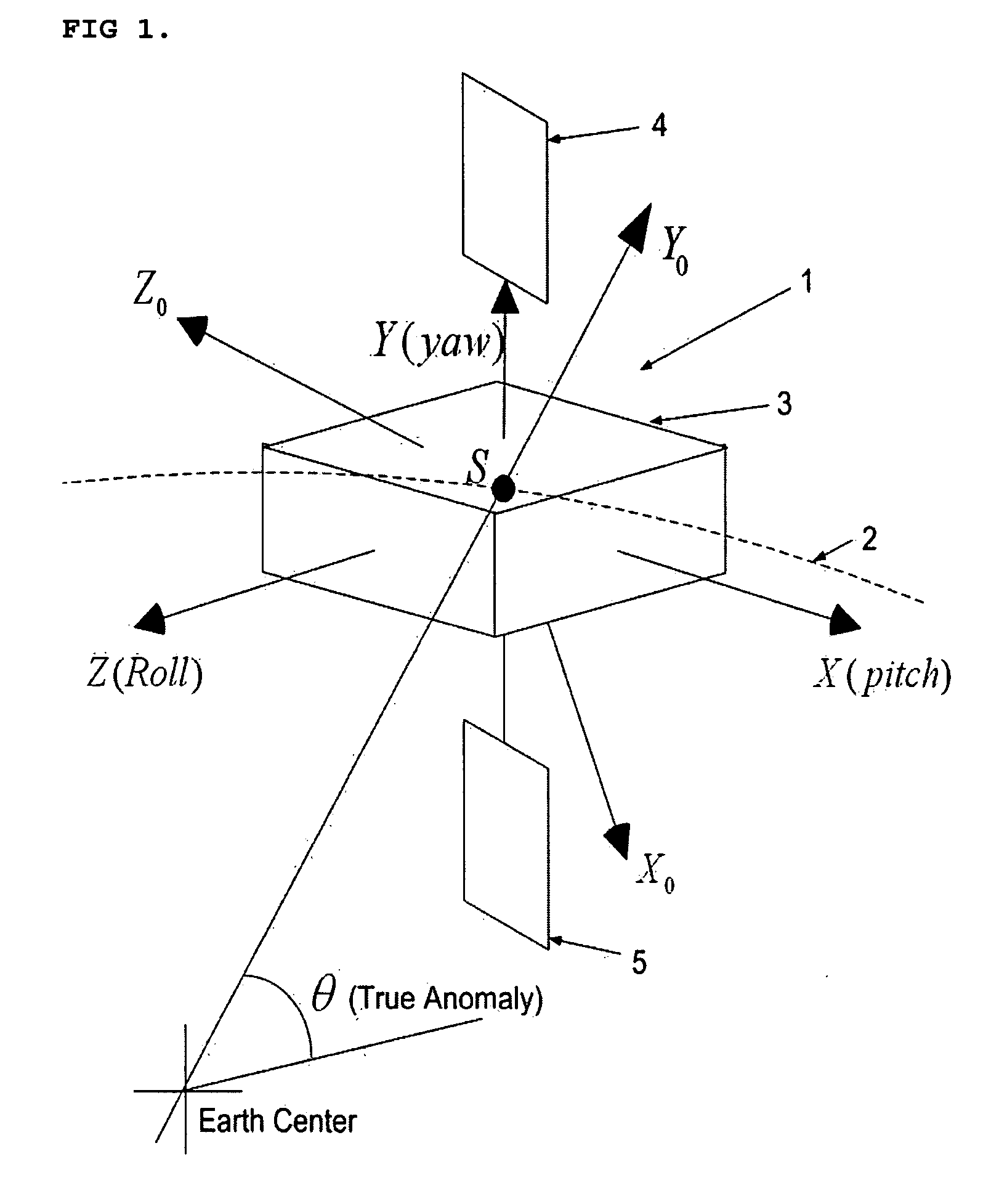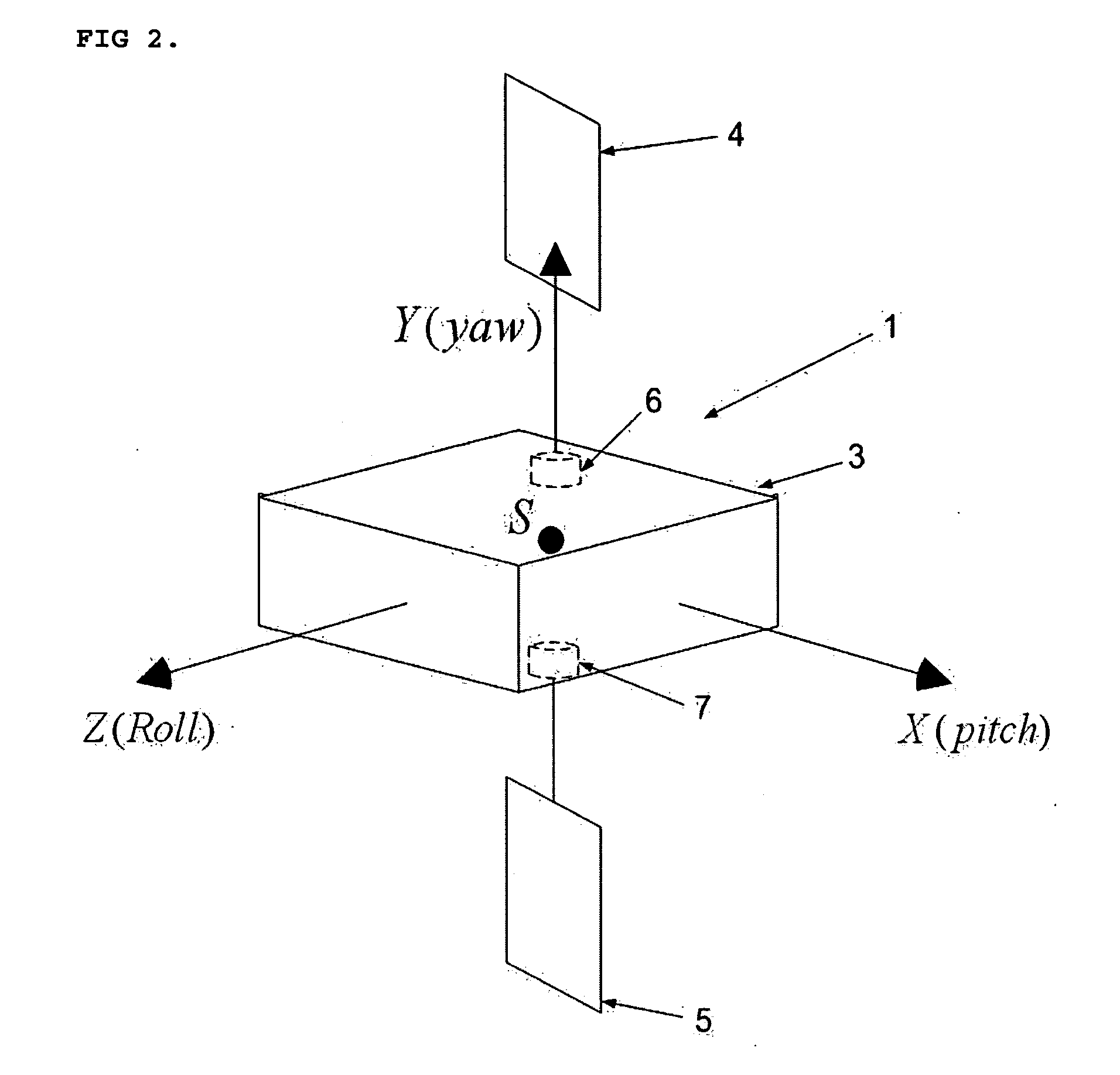Method for controlling the attitude of an satellites in elliptic orbits using solar radiation pressure
a technology of solar radiation pressure and satellites, applied in vehicle position/course/altitude control, process and machine control, instruments, etc., can solve the problems of affecting the stability of the vehicle, the amplitude of the oscillation of the attitude increases with the increase of eccentricity, and the deviation of the tim
- Summary
- Abstract
- Description
- Claims
- Application Information
AI Technical Summary
Benefits of technology
Problems solved by technology
Method used
Image
Examples
Embodiment Construction
[0040]FIG. 1 shows a satellite 1 in Earth orbit 2. The satellite 1 has a central body 3 with system center of mass at S. The two solar panels 4, 5 are attached to the central body 3 through drive motors 6, 7 (See FIG. 2). The first solar panel extending in the one direction (along the satellite body fixed Y-axis) away from the satellite body, and a second solar panel extending in the opposite direction; solar panels extending basically symmetrical and coaxial in opposite directions away from the satellite are normally coplanar. The coordinate frame XoYoZo passing through the satellite center of mass S represents the orbital reference frame. The nodal line represents the reference line in orbit for the measurement of the true anomaly, θ. The Xo-axis is taken along normal to the orbital plane, Yo-axis points along the local vertical and Zo-axis represents the third axis of this right handed frame taken. The orientation of the satellite is specified by a set of three successive rotatio...
PUM
 Login to View More
Login to View More Abstract
Description
Claims
Application Information
 Login to View More
Login to View More - R&D
- Intellectual Property
- Life Sciences
- Materials
- Tech Scout
- Unparalleled Data Quality
- Higher Quality Content
- 60% Fewer Hallucinations
Browse by: Latest US Patents, China's latest patents, Technical Efficacy Thesaurus, Application Domain, Technology Topic, Popular Technical Reports.
© 2025 PatSnap. All rights reserved.Legal|Privacy policy|Modern Slavery Act Transparency Statement|Sitemap|About US| Contact US: help@patsnap.com



